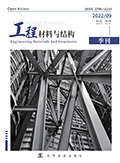参考文献
[1] 王欣悦, 丁思齐, 董素芬, 等. 混凝土可持续发展: 应对碳排放引起气候变化危机[J]. 工程材料与结构. 2022, 1(1): 1-14.

